Most electricians, as well as homeowners, have needed to visit the electrical panelboard in order to reset or turn off a circuit breaker. Most electricians have a keen understanding of the National Electric Code (NEC) and the requirements in this safety document. But not many homeowners or other individuals not associated with the electrical profession know this document even exists.
So, with that being said, how do we as electrical professionals assure that electrical panelboards maintain the necessary working space requirements? How do we as electrical professionals promote the need for this electrical working space so that this equipment remains readily accessible to the occupant or electrical contractor? Some of you are smiling right now, asking another question — “Can this ever be achieved in the first place?”
This is a brief article about electrical working space requirements that exist in many of the locations we live and work. It will provide several photos, some compliant and some not so compliant, showing what can happen when electrical code requirements are not adhered to. If there is an electrical panelboard at your facility, there is a need for electrical working space.
The Struggle Is Real!
How many times have you been off the clock and casually eating at a restaurant or walking around a shopping center, and the “electrician or electrical inspector” in you comes out? You can’t help but notice an electrical Codeviolation. My wife used to get really upset when this happened. But today, she has become used to it. She would often remark, “You can never just turn off being an electrician or an electrical inspector, can you!”
I used to feel bad when she called me out for this behavior, but I have come to realize that electrical safety has no timeclock or regular work hours. It is an ongoing struggle to maintain electrical safety in the cities and jurisdictions we live in.
The following page contains a collage of several electrical panelboard locations and what can happen when owners and occupants of facilities do not understand working space requirements. I am sure that you have seen much worse during your time as an electrical professional.
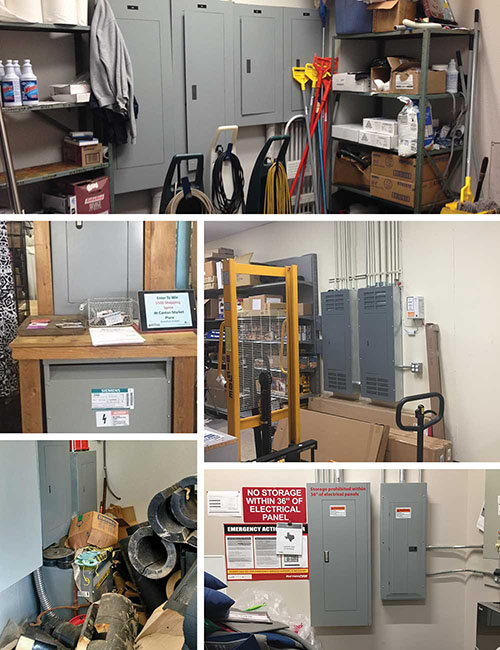
The National Electric Code Requirements
Let’s start by defining what we are going to discuss and what we are not going to discuss. All types of electrical equipment require some type of working space. This particular article will cover the three space requirements that comprise working space in front of the electrical panelboard. Another space that exists is referred to as dedicated electrical space, but I will save this for a future article.
Section 110.26 in the 2020 NEC is entitled Spaces About Electrical Equipment and outlines the three areas of working space discussed in this article. These include: the depth of the working space at 110.26(A)(1); the width of the working space at 110.26(A)(2); and the height of the working space at 110.26(A)(3). Review Section 110.26 for additional requirements.
One of the best explanations of the dimensions of this space that I have heard has been advanced by IAEI’sKeith Lofland during many of his electrical seminars. This space can be visualized as the space of an empty refrigerator box set in front of the panelboard. This “cardboard box” contains depth, width, and height very similar to what the NEC is trying to explain to the user of the Code. Figure 1 below helps to show these various spaces.

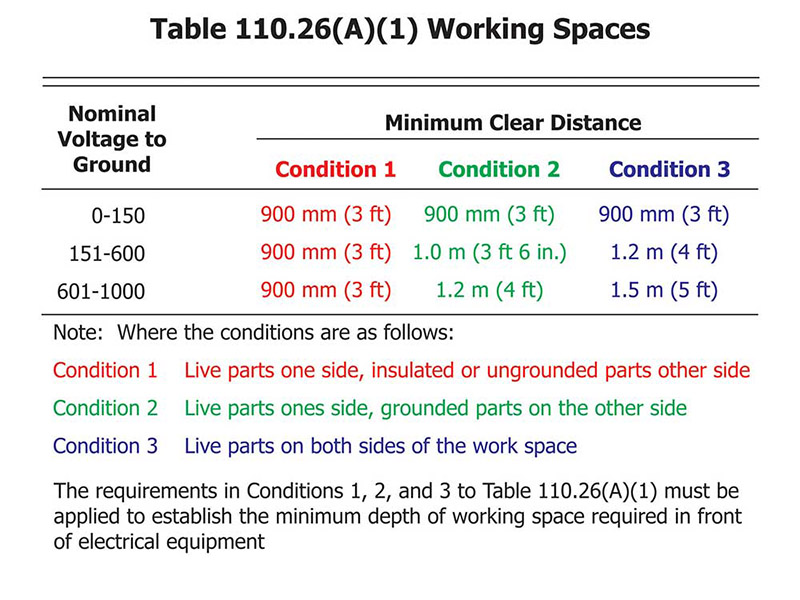
Depth Of Working Space
The depth of working space will vary at the panelboard due to the nominal voltage that is available. NEC Table 110.26(A)(1), Working Spaces, is a very useful table that details these measurements (see figure 2). The “Conditions” located beneath the table are very informative in order to apply the requirements properly. Figures 3, 4, and 5 are also very beneficial towards your understanding of these working space depths.
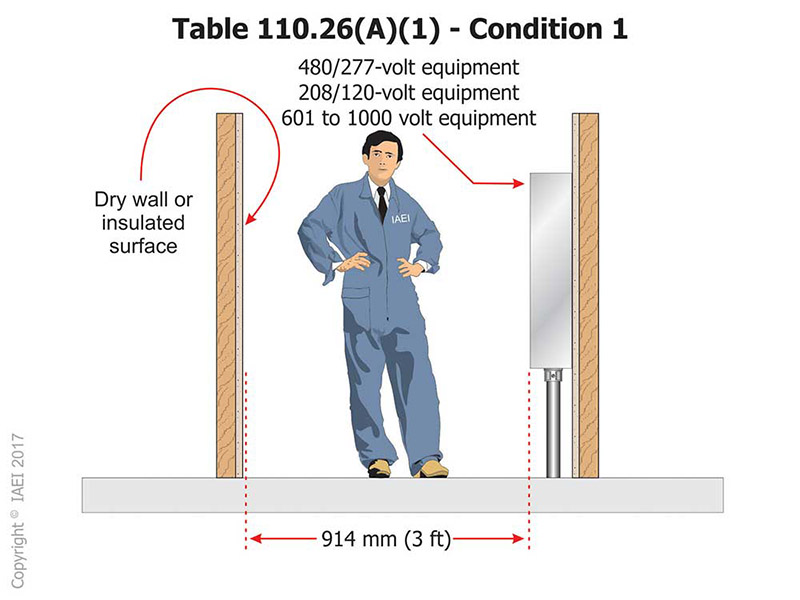
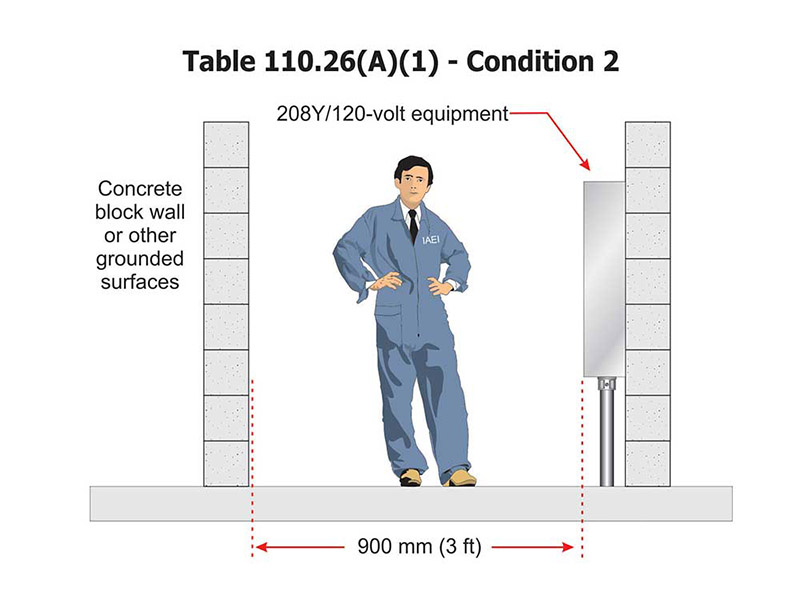
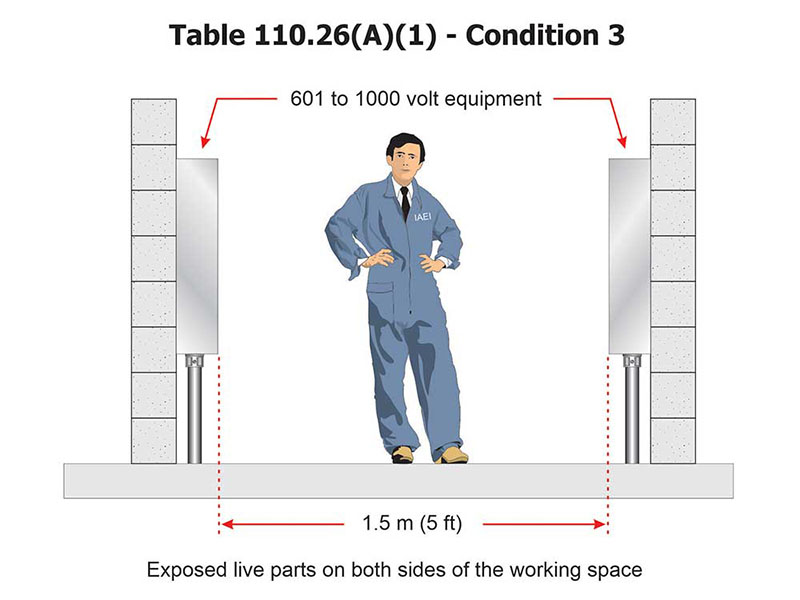
For a Condition 2 location, as shown in figures 4, 4a, and 4b, exposed live parts exist on one side of the working space as well as grounded parts on the other side of the working space. The note describing a Condition 2 location contains additional information that is sometimes found on an electrical exam. The note tells the user of the Code that items such as concrete, brick, or tile walls shall be considered as grounded.
- The 900 mm (3 ft) depth shown in figure 4 applies with a voltage of 208/120 volts.
- The 1.0 m (3 ft 6 in.) depth shown in figure 4a applies with a voltage of 480/277 volts.
- The 1.2 m (4 ft.) depth shown in figure 4b applies with a voltage of 601 to 1000 volts.
The final note to the table concerns Condition 3, as shown in figures 5, 5a, and 5b. This condition contains exposed live parts on both sides of the working space.
- The 900 mm (3 ft) depth shown in figure 5 applies with a voltage of 208/120 volts.
- The 1.2 m (4 ft) depth shown in figure 5a applies with a voltage of 480/277 volts.
- The 1.5 m (5 ft.) depth shown in figure 5b applies with a voltage of 601 to 1000 volts.
An example of a Condition 3 installation would be a location where panelboards are located across from each other in a room or hallway.
Width Of Working Space
Let’s move on and discuss the required width for safely working on the panelboard. NEC 110.26(A)(2) states that “the width of the working space in front of the electrical equipment shall be the width of the equipment or 762 mm (30 in.), whichever is greater.” In addition, this work space shall permit at least a 90-degree opening of the panelboard door. Review figure 6 for a good example of the width of this space for a single panelboard or for multiple panelboards installed side by side. This working space width is permitted to overlap each of any other adjacent working spaces other as well.
Height Of Working Space
The final type of working space I would like to discuss is located at 110.26(A)(3) and involves the height of the working space. This space is “to remain clear and extend from the grade, floor, or platform to a height of 2.0 m (6 ½ ft) or the height of the equipment, whichever is greater.” Furthermore, other equipment associated with the electrical installation, such as a wireway or gutter, located above or below the electrical equipment is not to extend more than 150 mm (6 in.) beyond the front of the panelboard. There have been several instances where this has been unintentionally violated by the electrical installer working in electrical rooms installing panelboards. See figure 7 for a good illustration of this working space height.
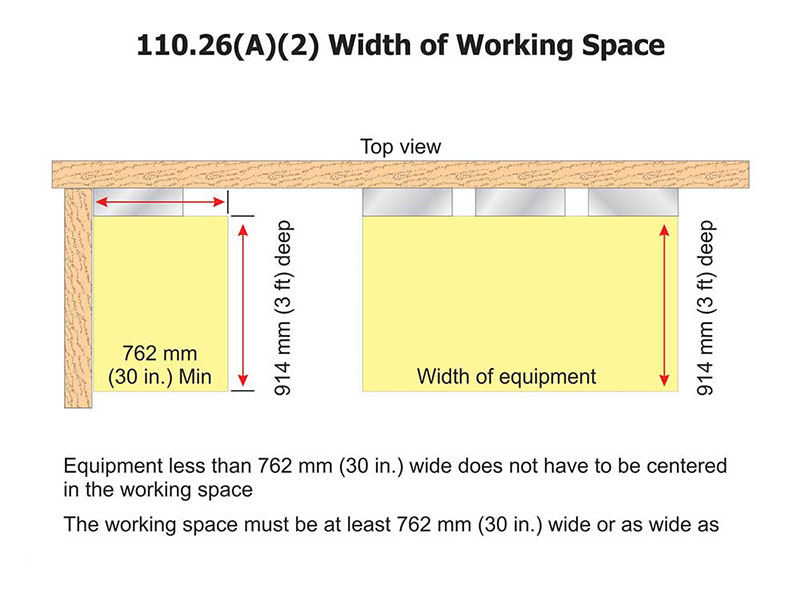
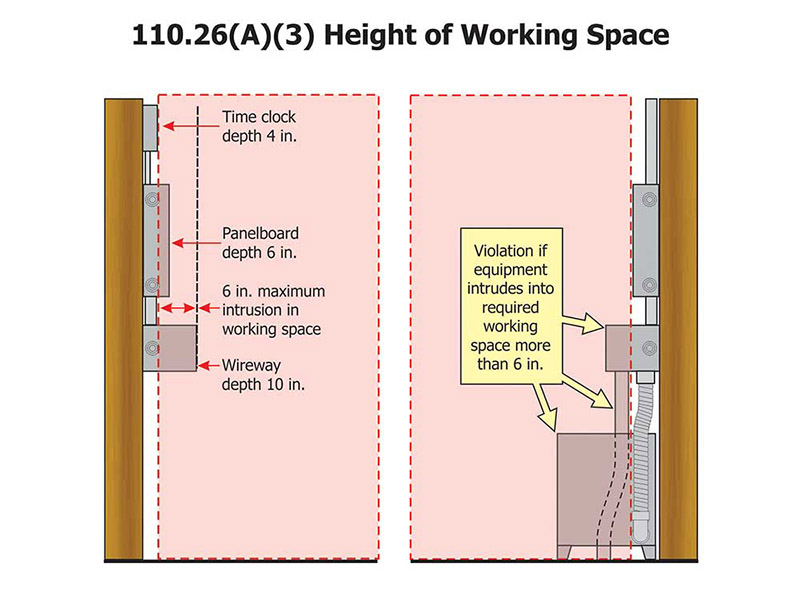
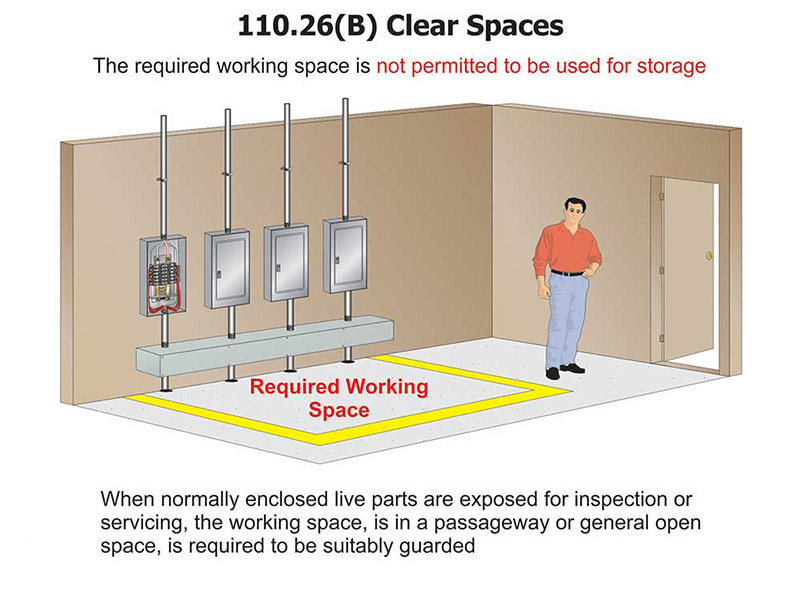
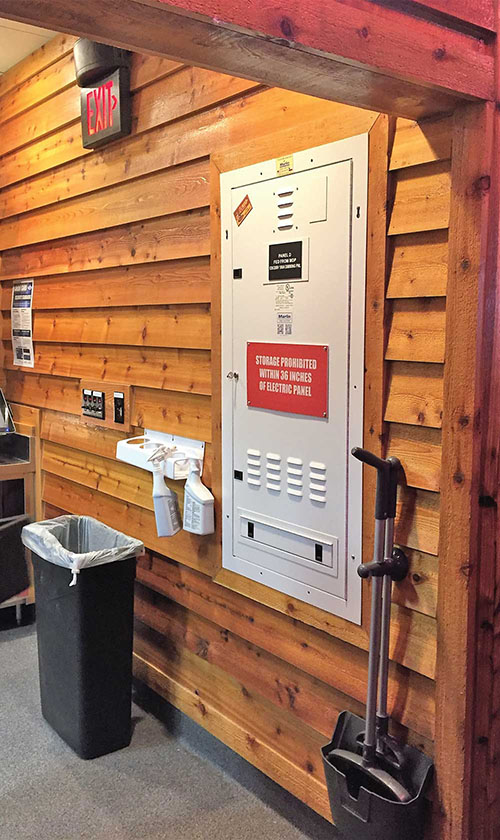
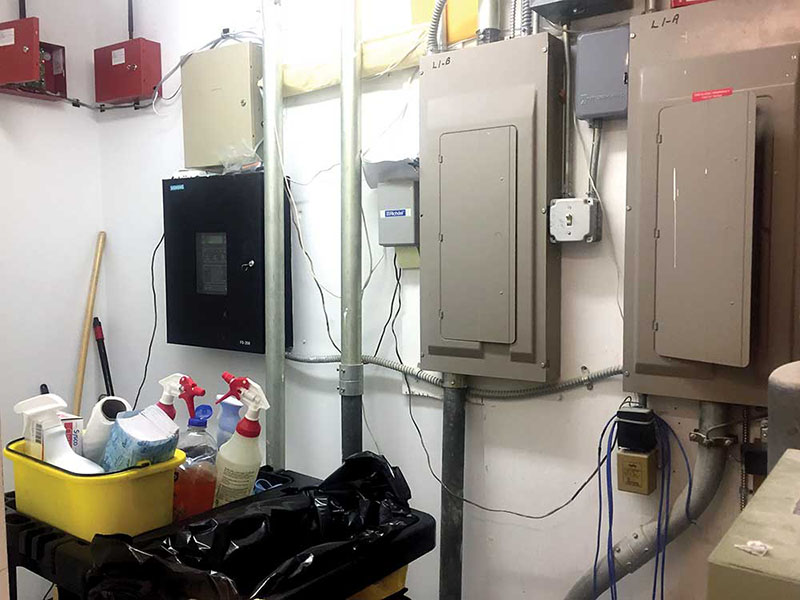
What Are We Trying to Achieve and Maintain?
All the requirements discussed above are in place so that we can work safely on these panelboard(s) and also comply with NEC 110.26(B), Clear Spaces. And as we have discussed, there are a lot of folks that can screw this up. Many may be unaware that what they have done is a problem or could prevent a person from readily accessing these panelboards.
Article 100 defines the term Readily Accessible as, “capable of being reached quickly for operation, renewal, or inspections without requiring those to whom ready access is requisite to take actions such as to use tools (other than keys), to climb over or under, to remove obstacles, or to resort to portable ladders, and so forth.” This definition is under the purview of Code Making Panel 1 (CMP-1). The working space (clear space) required by 110.26(B) should not be used for storage. Additionally, if normally enclosed live parts are located in a passageway or general open space and are exposed for inspection or servicing, the working space shall be suitably guarded. See figure 8 and photos 1, 2, 3, and 4 for panelboard locations and proper adherence and non-adherence to clear space requirements.
For those wondering how to achieve a guarded condition, this is defined in Article 100 and is under the purview of CMP-1 as well. As defined by the NEC, guarded can be achieved by “being covered, shielded, fenced, enclosed, or otherwise protected by means of suitable covers, casings, barriers, rails, screens, mats, or platforms to remove the likelihood of approach or contact by persons or objects to a point of danger.”
Food for Thought
Some folks reading this article may be feeling a bit guilty now and might be rushing to remove items stored in the working space of these panelboard locations. Others will not be phased one bit and might even remark, “Where do you expect me to put all this stuff after I remove it from the electrical room that encloses panelboard working space? This is where it has always been kept.” I have not even mentioned the typical single-family dwelling garage location with lawn care equipment, paint containers, shelving, or home care items that prevent the access of the panelboard location.
I cannot hold your hand through the remainder of your self-evaluation. But I would stress that in a time of an emergency, would you want an electrical professional taking quick care of the problem or spending time moving cleaning carts, shelving units, and building supplies? Several municipalities have been very proactive in making marking requirements and signage available to building owners and occupants for this clear space. See an example of this in photo 1.
Here at the International Office of IAEI, we were as guilty as anyone. Photo 5 is our electrical room before the remodel of our building. An old saying comes to mind- “Don’t throw rocks if you live in a glass house!” These conditions exist everywhere in our built environment and as electrical professionals, we need to continue to fight for our working space. I guess that everyone is guilty or partially guilty for allowing this to happen. Sometimes this will be mean just “biting the bullet” and finding a new place to keep the cleaning cart..

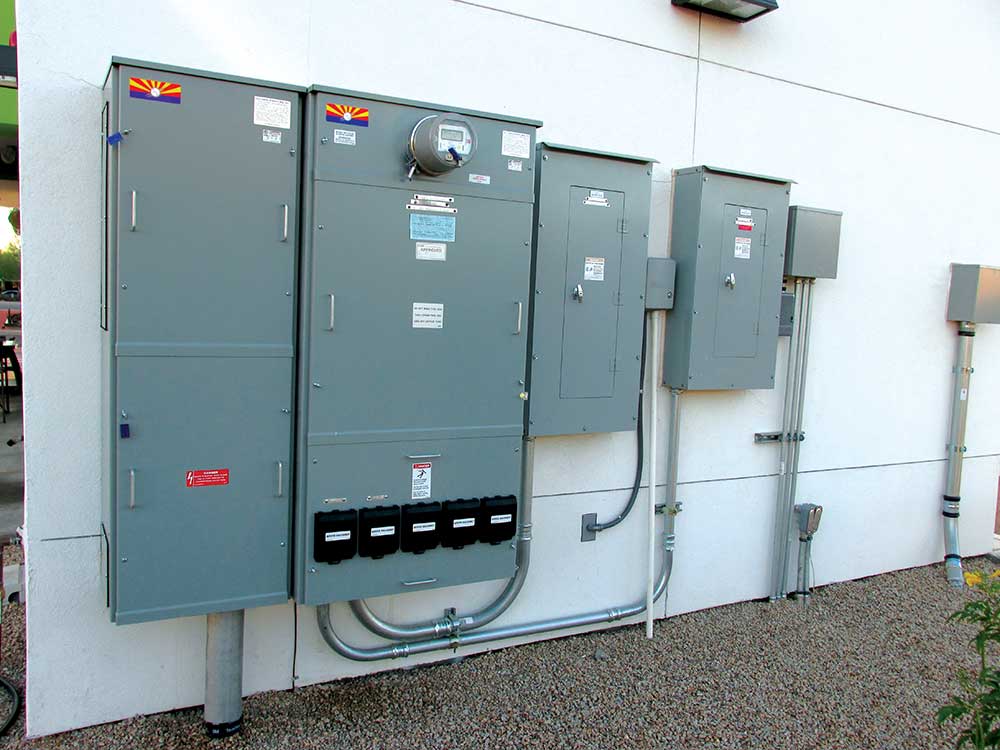
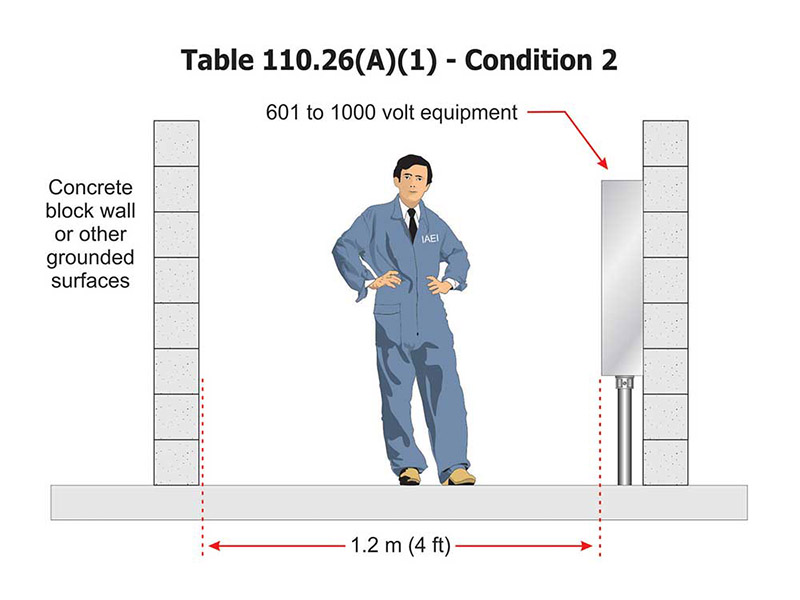
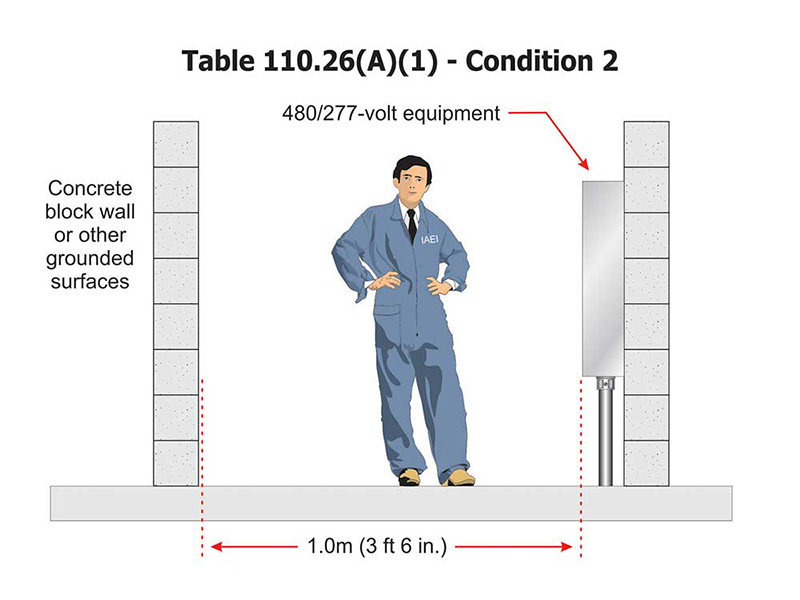
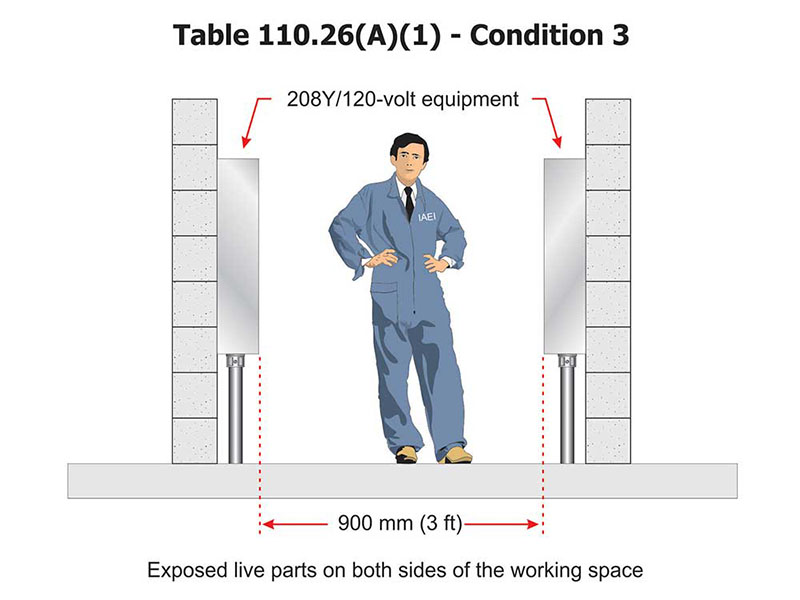

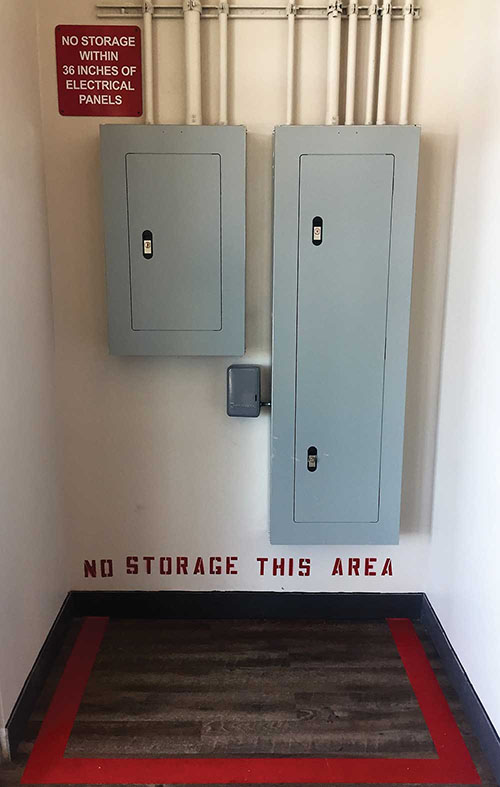
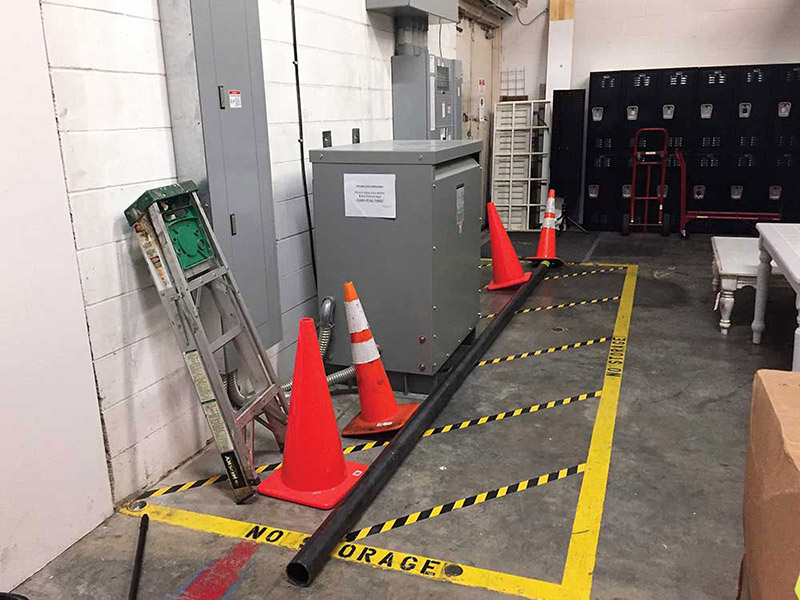






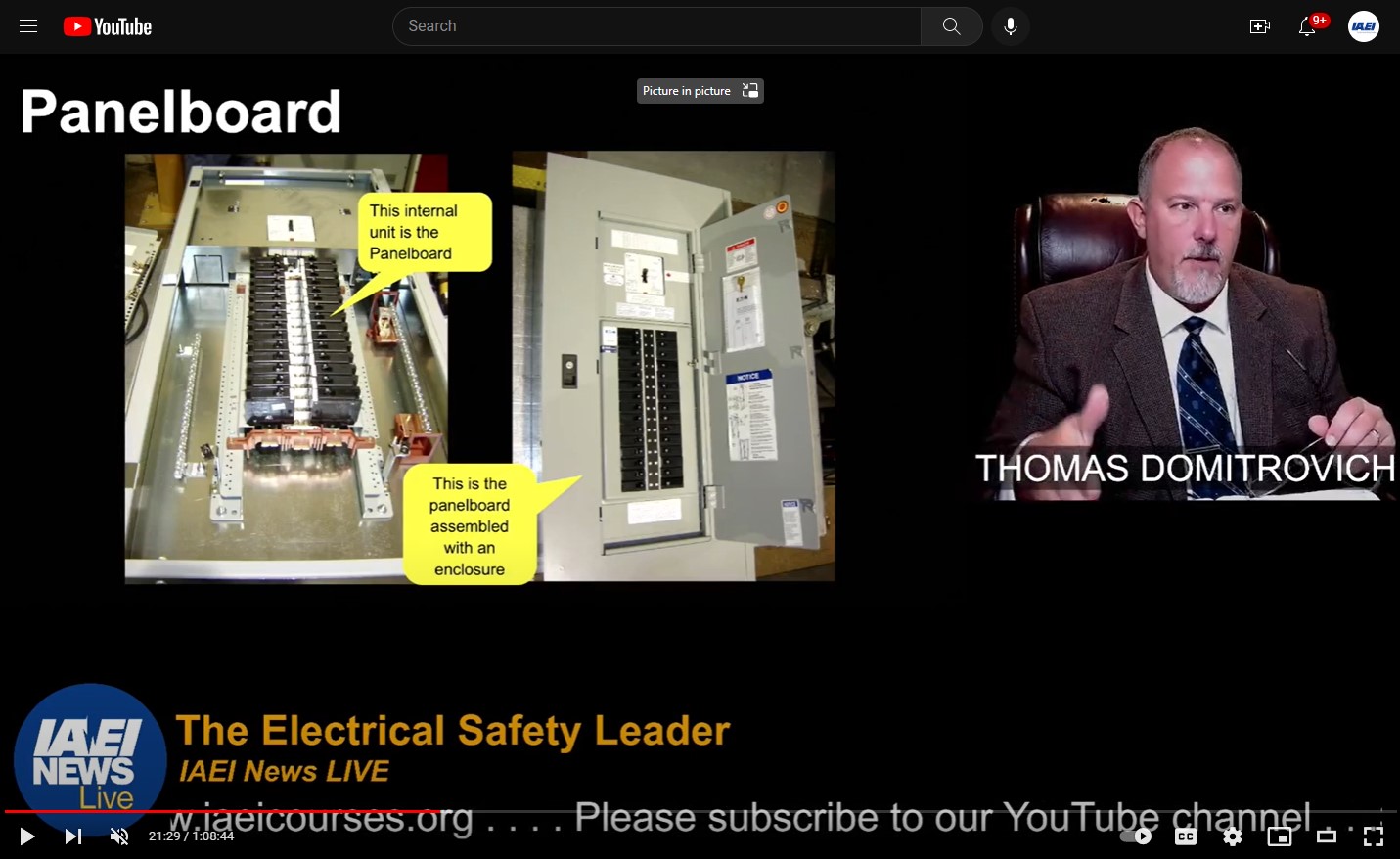


Find Us on Socials